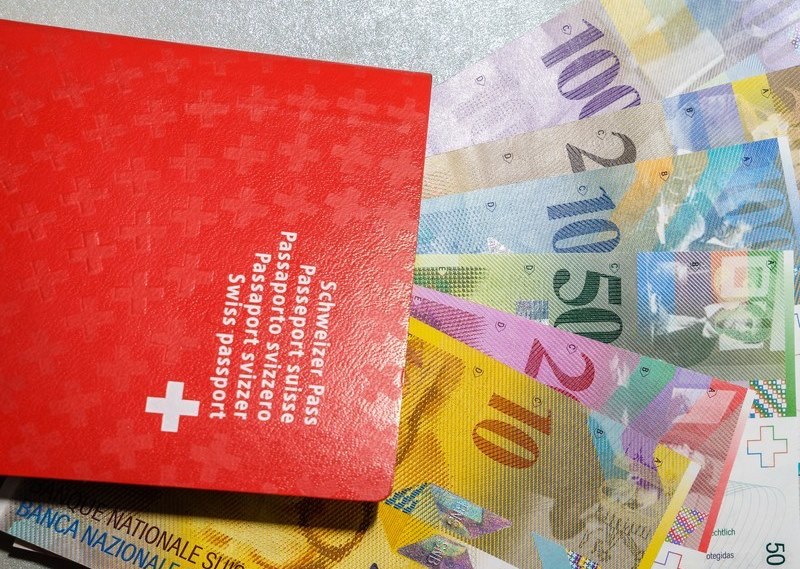The year 2008 will sadly remain an unusual year in economic and financial history, as it will in the sector of private wealth management. While it is clear for everyone that the economy has cycles of growth and contraction, the brutal change in the economic scenario observed in 2008 surprised most investors. Such a reversal of situation has had only few precedents during modern history. The fall in stock markets with the background financial crisis and banking system crisis was exceptional too and marked by an absence of transparency, which was highly regrettable.
Investors could only notice with resentment day after day the scale of the disaster on the performance of their investments.
This was particularly true in the emerging markets and Russia which were badly hit. In such a disruptive and difficult context, it was extremely complicated for investors to objectively evaluate the performances realized by private wealth management professionals. Probably more now than during the previous crises, private investors are confronted with a greater need to understand, to analyze and to judge the quality of the services rendered by their wealth managers.
More than ever, investors in 2009 are hence seeking comparative tools allowing them to evaluate investment management performance and the quality of services supplied by their bankers.
This observation motivated our decision to offer, free of charge, private investors our modern tools to measure and analyze comparative portfolio performance, a service which was lacking in the sector of private wealth management.
BBGI Group brings a new transparency by publishing the first family of Indices that compares performances obtained in the field of private wealth management.
Intended for private investors, these reference indices allow investors to have access to a monthly detailed categorization of performances, presented in total objectivity and transparency, categorized into eight asset classes which are generally representative of managed private wealth management portfolios and then further characterized by a family of three diversified reference indices. The allocation to these eight asset classes reflect three different objectives of return and risk, defined as low, medium and dynamic.
A FOCUS ON THE SWISS FRANC DENOMINATED PRIVATE BANKING INDICES For centuries, Switzerland has been considered as the symbol of political and monetary stability. Switzerland naturally also became the symbol of caution and expertise in private wealth management.
It is common knowledge that the Swiss currency has been one of the strongest currencies in the world since the USD is a floating currency. For almost 35 years, the Swiss Franc has appreciated against the USD by approximately +4% every year.
Moreover, Swiss assets tend to outperform USD denominated assets over the long run. They were, by the way, during the last financial crisis also among the best performing assets.
For these reasons, international investors should always consider defining their long term investment strategy with this particularity in mind, and eventually construct their portfolio with a hard currency like the Swiss Franc as the reference currency.
Hence, we believe it is very relevant for international investors to compare the performances recorded on their portfolios or their assets managed by professional wealth managers to the theoretical results of our Private Banking Indices expressed in Swiss Francs.
COMPOSITION OF OUR PRIVATE BANKING INDICES As for the composition of our balanced indices, they mainly consist of traditional investments (Bonds, Equities and Real Estate) of which the global allocation varies between 95% for the «low risk» index and 80 % for the «dynamic risk» index. The allocation in non-traditional investments is therefore increased according to the level of risk supported by each index. This allocation progresses from 5% (commodities) in the reference «low risk» index to 20% at the most (commodities, alternative investments and «private equity») in the «dynamic risk» index. The bond segment represents a very wide proportion (65 %) of the «low risk» index and only 25 % of the «dynamic risk» index. The privileged exposure to domestic assets varies from 65 % in the case of the «low risk» index to 45 % for the «dynamic risk» index. The reference «low risk» index is thus widely concentrated on fixed-income investments and privileges assets in Swiss Francs. The proportion of real assets (equities, real-estate and commodities) gradually increases between the «medium risk» index and the «dynamic risk» index. It is the same for the allocation in foreign currencies and the other non-traditional investments.
PERFORMANCE The year 2008 ended poorly for financial markets and for the balanced BBGI Group Private Banking Indices, which were still affected by the decline in values in December for all asset classes (international bonds -5.6%, Swiss equities -4.4%, international equities -9%, private equity -12.9%, alternative investments -12.8%, real estate -3.3%, commodities -23.6%). Swiss bonds (+0.9%) remain the exception of the year and are the best positive contributor to the results. In historical comparisons, all the strategies registered their worst annual performances since 1993.
The crash of all asset classes in just several months brutally erased the performance spreads generally observed over the long term between different strategies. In what is a relatively rare phenomenon, the three strategies recorded the same performance (+4.7%/year) over the last fifteen years, whereas they were spread out from +7.8 % to +11.2% and +14.7% for the 2002-2007 period.
In 2008, if we consider that the majority of investors adopted "low risk" and "moderate risk" profiles of management, their portfolio assets should have registered a decrease in value ranging between -11.5% and -22.4%.
But depending on the strategy effectively carried out by the bankers, returns for various investment profiles might have been much worse than BBGI indices returns.
At December 31st 2008, the BBGI Group Private Banking Indices, registered negative annual results for the first time in five years. The strong decline in international equity markets (-44 %), as measured in Swiss Francs is clearly the first factor which penalized the performance of the diversified reference indices.
With a crash of -34%, the Swiss market resisted better, but nevertheless was a very negative contributor to the overall global performance. Among other important factors affecting the negative performance of the indexes, we find real estate (-50.6%) and commodities (-49.5%).
In spite of a modest allocation in both dynamic indices, the poor performance of the Private Equity segment (-67.7%) added a strong negative contribution.
CONCLUSION These performances present negative returns for the previous year. Investors will find it very interesting to put their real results into perspective by comparing them with the returns of our indices. They might realize that even during very difficult times, a financial crisis or economic meltdown, investing in Switzerland and in Swiss assets has always been a very appropriate diversification of risks.
After their massive 2008 plunge, financial markets might already have anticipated most, if not all, of the possible negative economic and systemic developments.
The abnormal convergence in the long term performances of our three indices might indicate, that if the “dynamic” strategies have not performed accordingly to historical expectations, it is certainly time for the courageous investor to move from a cautious approach towards a more dynamic long term investment strategy.
A regular check on the returns recorded by BBGI Group Private Banking Indices will definitely increase investor confidence in the way their assets are managed. As the creator and publisher of these unique Private Banking Indices, BBGI is in a perfect situation to offer investors very efficient wealth management solutions, as it has been the case for many years.













